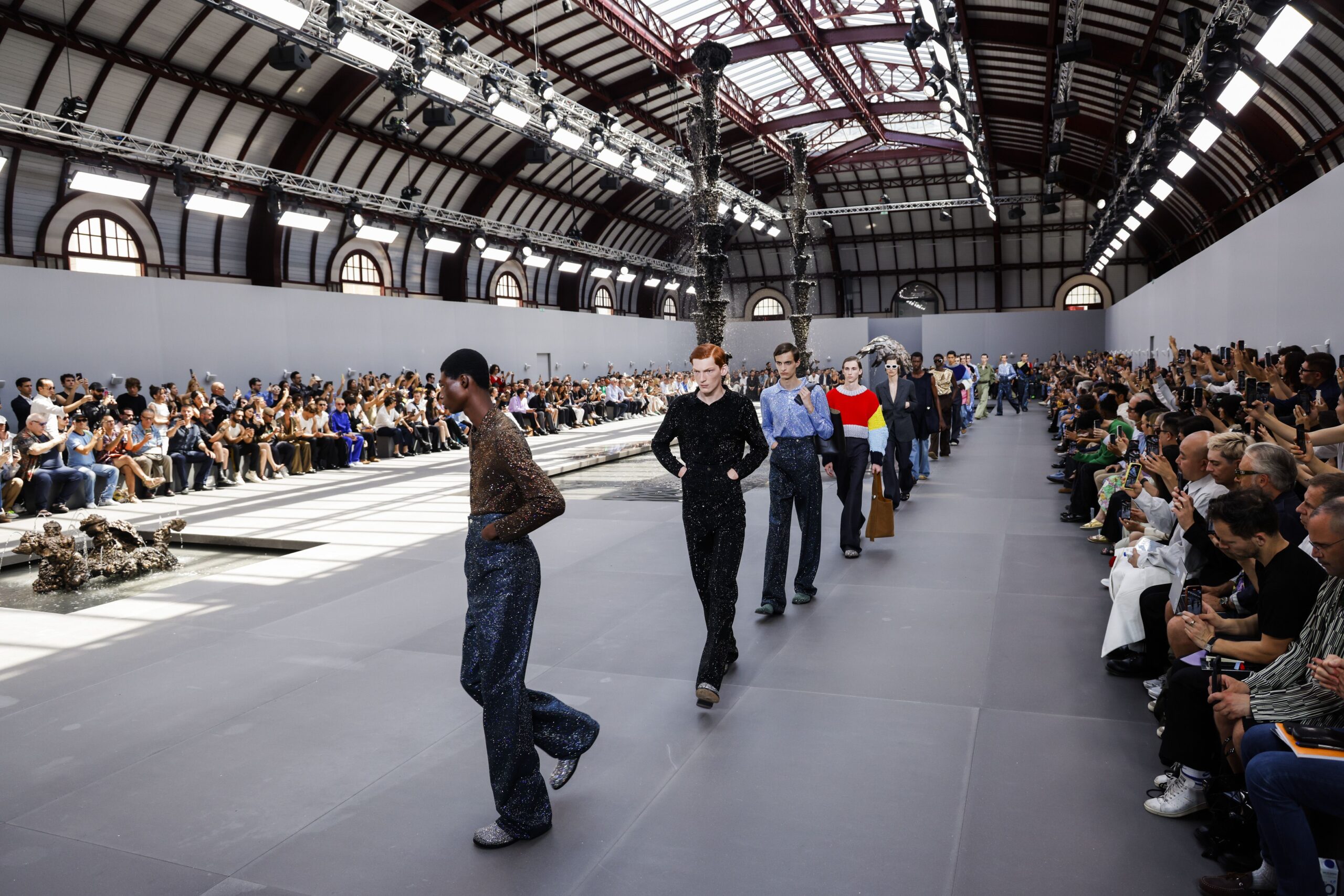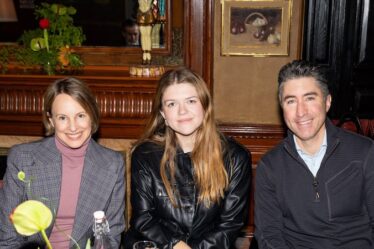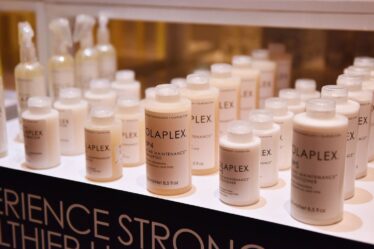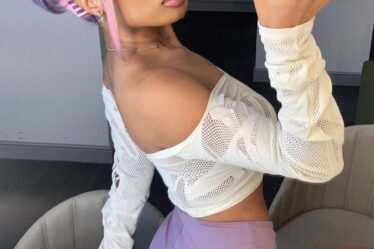
PARIS — The men’s fashion week that closed here on Sunday night was an utterly Parisian affair with a postcard-like feel to it. The message was clear: Paris is fashion, and fashion is Paris. Isn’t it? The City of Lights is certainly the arena where fashion’s titans compete, as well as where smaller creators from all over the world come to reach a bigger, more international audience. But this season, the action was increasingly polarised, like the fashion system itself.
The grandeur of Pharrell’s debut at Louis Vuitton, complete with a gilded takeover of Pont Neuf and a booming Jay-Z concert, was of historic proportions. The spectacle was highly entertaining, but the fashion was less convincing. There was a stiffness to the proposal and a sense of disparate things plucked from the archive and stuck together without a clear point of view beyond the idea of splashing the brand’s damier pattern everywhere. Pharrell’s own quirky sense of style was noticeably absent. Of course, Louis Vuitton has always been more than a fashion company, and fashion feels increasingly peripheral to its strategy.
Pharrell’s friend and longtime collaborator Nigo is slowly taking strides at Kenzō: his latest outing was a step forward, if a small one. The sense of joy that was integral to the expression of Kenzō Takada, and a pillar of the house, was still largely missing, while the East-meets-West theme, another pillar of Kenzō, was reduced to a blend of kimono closures and Parisian chic. Sure, the Tour Eiffel provided a beautiful backdrop, but that only went so far. The womenswear, in particular, looked clunky and directionless. It will take more than splashing the Kenzō logo everywhere to put the long-ailing house back on track.
Held in an upper alley of the majestic Hôtel des Invalides, the Givenchy show was grand, but in a pared back, militaristic way. Since the start of his tenure at the brand, designer Matthew Williams has charted many waters, not always successfully. The direction he is pursuing at the moment, a sort of sharply tailored take on normality, is his most convincing: his latest outing didn’t ooze personality, but it had a certain elegance.
At Dior, Kim Jones celebrated his fifth year as men’s artistic director with a sensational production, held inside a steamy hot metal box, that featured a platoon of models blooming from the ground like steel flowers. (Delicate masculinity rules all over Paris). But the perfect choreography overshadowed the clothing — loose suits with abbreviated slacks, coats, cabochon-encrusted knitwear and some seriously crazy fuzzy and psychedelic knitted caps — which was a pity. With its stress on Dior’s signature “cannage” stitching and elated sense of softness, this was one of Jones’ most accomplished outings for the house. A bit Chanel, truth be told, but in the most charming of ways.
But critiquing fashion’s luxury megabrands is too easy. Harnessing bottomless budgets to stage fashion entertainment is understandable. What stinks, however, is not the spectacle, but the spectacle as a cover-up for a lack of creative ideas. When showmanship actually serves the clothes, in fact, magic happens. At Loewe, Jonathan Anderson continues to tune his unique practice of designer-curator. This season the show took place amongst three monumental Lynda Banglis sculptures spouting and squirting water everywhere — fountains, but non your average fountains. The same liquid patina was to be found in the crystal pavés that, like filters, completely morphed the appearance of banker shirts, polos and jeans; the same dwarfing monumentality informed the silhouette, which was meant to be seen in fish eye, from the bottom up, with waist going all the way up, hemlines flaring, busts contracting.
The way Anderson hammered on the new silhouette by reiterating very ordinary items such as chinos and blazers was outstanding. The show proposed a shift that will have an impact on the way we dress as well as a spectacle. Shouldn’t a show ultimately be all about the clothes?
Rick Owens was similarly inclined, in terms of line, moving the waist high, narrowing the bust, flaring it all at the bottom. By raising the shoulder like the consummate sartorial drama queen he is, Owens gave the whole look a ghoulish finish: part Bela Lugosi, part Peter Murphy, in any colour you want as long as it’s black. Staged en plein air amid fireworks and the remnants of a rainstorm, the show was Owens exploring joy his own way, with a sense of abandon and elegance that never ceases to thrill.
Elsewhere, Marine Serre’s rock extravaganza was a befitting frame for her tribal mashup of the suburban and the dystopian, while KidSuper’s theatre play overpowered the clothes.
Where the idea of focusing on line and texture came forward, it was with a reductionist urge that was elating. On a general level, verticality and elongation ruled, and with that, in our Ozempic era, an idea of extreme thinness (one cannot separate the silhouette from the body). Nowhere did it get longer and more fluid than at Dries Van Noten, one of the few designers who can make elegance feel spontaneous and uncontrived. The outing was one of his best in recent times, all flowing precision and sheen and effortless sophistication. A wider range of ages and body types on the catwalk, however, would have added another layer of meaning.
At Wales Bonner, the slim tailoring and decoration, mixed with lean 70s-inflected sportswear, were exquisite, while at Officine Générale a sense of Parisian tautness came with an easy slant. Ease was the word at Hermès, where Véronique Nichanian delivered a masterful exercise in weightlessness and accuracy. Newcomer Burc Akyol — a talent worth keeping an eye on — worked on verticality too, mixing the austere elegance of black with skin-revealing openings and slits for what he calls a gasp effect. Meanwhile, Ludovic de Saint Sernin extended the range of his code, keeping the silhouette slim and vertical.
Not all silhouettes were about slim elongation, however. Louis-Gabriel Nouchi is Paris’ king of body multiplicity. Translating Christopher Isherwood’s novel A Single Man into a clothing offer, as per label manifesto (one book per season), Nouchi turned the idea of the car crash into ingenious draping and askew folding. At times the goings got a bit too literal (a car door or a wheel as accessories were frankly de trop) and the elan of previous efforts was missing, but Nouchi has a vision all his own that, should it attract an investor, could grow bigger.
What Hed Mayner can do with big volumes is outstanding. Exploring the possibilities of foil bonding, this season he made his trademark oversized shapes even bigger, at once stiff and impalpable, and it was a blast of plainness turned into something extraordinary.
The ordinary and the tranche de vie are always poetic and real at Lemaire, which for the second season in a row looked particularly streamlined and focused, delivering a soft punch. At Issey Miyake Homme Plissé, the technicality of making pleated clothing was the starting point of yet another inspiring foray into movement and precision, with a flowing energy. The collection had a newfound softness to it that made it particularly timely.
Paris is fashion, that’s for sure. But what would Paris fashion be without the Japanese? A huge dose of risk taking and experimentation, or quite simply thought provoking, progressive styles would surely be missing. What’s forever fascinating about designers coming from Japan is the variety of the output and the dedication they put into shaping their individual visions.
This season they were all in top form, from the forever rugged Yohji Yamamoto, whose vision of masculinity is badass with a soft soul, and softly bold clothes to match, to Rei Kawakubo, whose quest to go beyond reality at Comme des Garçons is tireless, and came this season with a psychedelic, slightly tropical ascent. What’s discombobulating, however, is how much Kawakubo infantilizes men, and, at times, how clownish they look in her hands.
Kolor, the brainchild of Junichi Abe, was as colourful and cheerful as expected: a summer exploration of mountain gear with nothing predictable about it. Junya Watanabe finally applied the deconstructive/constructive principles of his womenswear to menswear, and it was a feast of collage garments, repurposed and slashed with an Edward Scissorhands feel to them. At Sacai, the morphing of workwear and formalwear was top notch, if tainted with way too evident Prada echoes and a general air of Lucas Ossendrijver’s tenure at Lanvin.
What really stood out, however, was Doublet, the brainchild of Masayuki Ino. Multiplicity, or perhaps randomness, was the rule. And yet there was a method to the madness, the twisting and the turning, fusing showmanship and design in ways that were puzzling and amusing.



